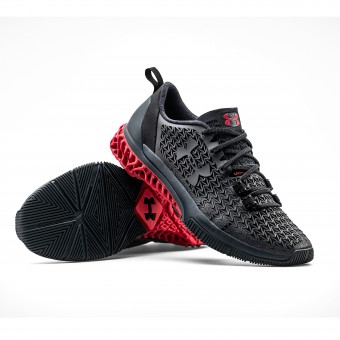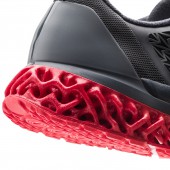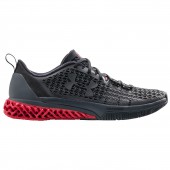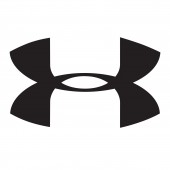UA Architech Footwear by Alan Guyan and John Acevedo |
Home > Winners > #48354 |
 |
|
||||
| DESIGN DETAILS | |||||
| DESIGN NAME: UA Architech PRIMARY FUNCTION: Footwear INSPIRATION: UA Innovation Team studied geometric shapes, nature, architecture, materials, and structures to create a unique yet functional midsole design. The final structure, consisting of an interlaced lattice design, can only be created through a proprietary 3D printing process. UNIQUE PROPERTIES / PROJECT DESCRIPTION: Under Armour’s dedication to make all athletes better, and to our core DNA of performance, we see that all athletes can benefit from this technology. This is our first-ever 3D printed performance trainer. The UA Architech is a 360-degree performance training shoe that features a functional 3D printed midsole and 3D ClutchFit auxetic upper design that creates a “super-hybrid” trainer. This performance trainer provides athletes with the ultimate stability and cushioning to take on the most intense OPERATION / FLOW / INTERACTION: - PROJECT DURATION AND LOCATION: We spent a little over two years focusing on materials, 3D printing, post-processes, and solutions to create the Architech trainer. The development was done at our Baltimore, Maryland, and Portland Oregon offices |
PRODUCTION / REALIZATION TECHNOLOGY: The innovative 3D printed midsole was combined with a flow-molded 3D ClutchFit auxetic upper to provide athletes with a shoe that not only gives a locked-in, supportive feel, but also flexes and moves with the foot to provide a Zero Distractions experience. Add in the Brand’s unparalleled Charged Cushioning underfoot for responsiveness and comfort and a thin rubber outsole for traction and you have Under Armour’s most elite performance trainer, the UA Architech. SPECIFICATIONS / TECHNICAL PROPERTIES: - TAGS: UA Architech RESEARCH ABSTRACT: - CHALLENGE: During the shoe manufacturing process, there are always certain levels of challenges to face, and this applies not only to 3D printed sampling, but also with high volume production. Our goal was to create a 3D printed heel component that is engineered specifically for the strength athlete training, and to provide a stable and supportive platform within all three planes of motion. This is demonstrated in the final design by only focusing on the heel section of the midsole. We wanted to focus on heel stability, yet allow for flexibility in the forefoot. Bonding several different types of footwear material components together is always a concern, and it can really make or break a product. In the early stages of development, we conducted numerous bonding trials to ensure we were selecting the right materials. We achieved this with great success, allowing us to focus on the individual component inter-gradation, and the overall execution. ADDED DATE: 2016-03-31 23:01:33 TEAM MEMBERS (1) : Alan Guyan, John Acevedo, and Alan Toronjo IMAGE CREDITS: Alan Guyan and John Acevedo , 2015. PATENTS/COPYRIGHTS: US 20140259787 A1, EP 2777420 A1, and we have a few more to add to the list... |
||||
| Visit the following page to learn more: https://www.underarmour.com/en-us/3d-arc |
|||||
| AWARD DETAILS | |
 |
Ua Architech Footwear by Alan Guyan and John Acevedo is Winner in Footwear, Shoes and Boots Design Category, 2015 - 2016.· Press Members: Login or Register to request an exclusive interview with Alan Guyan and John Acevedo . · Click here to register inorder to view the profile and other works by Alan Guyan and John Acevedo . |
| SOCIAL |
| + Add to Likes / Favorites | Send to My Email | Comment | Testimonials | View Press-Release | Press Kit |







